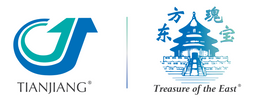Steps we take to provide exceptionally clean herbs - Part 1: Microbiologicals
1. Direct Sourcing
Our supplier directly purchases the harvests of over 300 farms, giving us control over the quality of raw herb ingredients starting with soil preparation and planting. After the herbs are harvested, they are immediately sent to one of seventeen regional processing facilities to be washed, dried, and processed using Pao Zhi techniques as needed.
Most other herbs, in contrast, are sold through wholesale herb markets or through middlemen that both extend the amount of handling and the time in storage. The longer the herbs are stored, the more opportunities for bacteria, mold, and yeast to grow.

2. Proper Storage
Once dried, the herbs are packaged, transported, and stored at our supplier's facilities outside Shanghai, China. There are two dedicated warehouses for incoming materials: a temperature controlled warehouse for the majority of the raw materials, and a refrigerated warehouse for herbs with high sugar content (e.g., Gou Qi Zi) or are otherwise more prone to decay (e.g., Bo He). In both cases, a sample of each batch is tested for microbiologicals before the materials can accepted into production.
3. High Temperature Decoction & Spray Drying
Once in production, the herbs are decocted in pure water to extract the active chemical components. The decoction time and temperature (100℃ or higher) used for extraction effectively kills microorganisms. In a subsequent spray dry process, the air temperature in the process chamber is between 160° C and 190° C, which is inhospitable to microorganisms.
4. Close Loop Handling
The extraction liquid is then transported via a sterile, closed pipeline between separation, concentration, and spray dry processes. This means there is no opportunity for the herbs to be exposed to environmental bacteria, yeast, or mold starting from the decoction step all the way until the conclusion of the spray dry process.

5. Cleanroom Environment
Then, the dry powder extracts are collected in a production environment that is a Class D cleanroom, which is strictly controlled for the presence of airborne particulates and pressurized to ensure that any contaminants flow out of the cleanroom rather than in. Any and all staff in this production environment must wear full-body cleanroom suits, including coverings for the hair, face, hands, and shoes, to minimize contamination.
6. Intermediate & Final Testing
The herbs are again sampled and laboratory tested to ensure that the microbial levels meet pharmaceutical standards before they are permitted to continue in the production process.
Following granulation and packaging, the finished herbal extracts are tested a final time according to international standards. The microbial tests are conducted in a national-level laboratory certified by CNAS to ISO/IEC17025 standards.

The controls described above are components of a comprehensive quality control program that allows our products to meet and exceed China’s standards for pharmaceuticals and US standards for dietary supplements.
Stay tuned for Part 2, in which we discuss our highly effective controls for environmental toxins, like heavy metals, aflatoxin, and sulfur compounds.



















